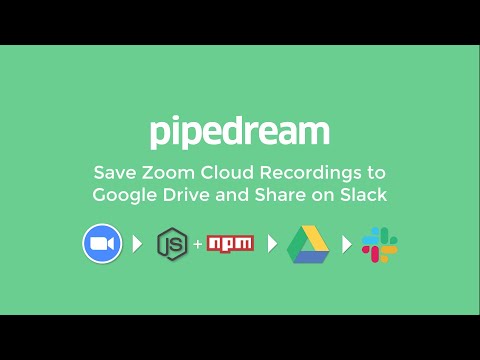What do you want to automate
with GitLab and Zoom?
Prompt, edit and deploy AI agents that connect to GitLab, Zoom and 3,000+ other apps in seconds.
Trusted by 1,000,000+ developers from startups to Fortune 500 companies
Popular GitLab and Zoom Triggers#
Overview of GitLab#
The GitLab API provides programmatic access to your GitLab projects, allowing you to automate common tasks, manage issues, merge requests, and more. With the GitLab API on Pipedream, you can create customized workflows that integrate with other services, streamline your development process, and enhance project management. By leveraging the power of serverless, you can set up triggers for GitLab events and perform actions across a variety of apps without managing infrastructure.
Connect GitLab#
import { axios } from "@pipedream/platform"
export default defineComponent({
props: {
gitlab: {
type: "app",
app: "gitlab",
}
},
async run({steps, $}) {
return await axios($, {
url: `https://${this.gitlab.$auth.base_api_url}/api/v4/user`,
headers: {
Authorization: `Bearer ${this.gitlab.$auth.oauth_access_token}`,
},
})
},
})
Overview of Zoom#
The Zoom API lets you tap into a rich set of functionalities to enhance the video conferencing experience within your own app or workflow. With the Zoom API on Pipedream, you can automatically create meetings, manage users, send meeting notifications, and more, orchestrating these actions within a broader automation. This allows for seamless integration with other services, enabling both data collection and action triggers based on Zoom events.
Pipedream workflows allow you to run any Node.js code that connects to the Zoom API. Just create a new workflow, then add prebuilt Zoom actions (create a meeting, send a chat message, etc.) or write your own code. These workflows can be triggered by HTTP requests, timers, email, or on any app-based event (new tweets, a GitHub PR, Zoom events, etc).
Connect Zoom#
import { axios } from "@pipedream/platform"
export default defineComponent({
props: {
zoom: {
type: "app",
app: "zoom",
}
},
async run({steps, $}) {
return await axios($, {
url: `https://api.zoom.us/v2/users/me`,
headers: {
Authorization: `Bearer ${this.zoom.$auth.oauth_access_token}`,
},
})
},
})
Related Videos#
